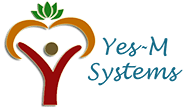International Software Testing Qualifications Board ISTQB Training Course
Audience: Students with experience in object-oriented programming
Student Location: To students from around the world
Delivery Method: Instructor-Led – Live online Training
International Software Testing Qualifications Board ISTQB Training Course
Get access to 100% job oriented training, instructor-led live learning, and a rich ISTQB course syllabus with Yes M Systems. International Software Testing Qualifications Board’s certification is globally recognized and holds key importance for professionals. Add another feather in your profile with ISTQB training, now.
Key Features
Acknowledgements
Fundamentals of Testing (K2)
- Why is Testing Necessary (K2)
- Software Systems Context (K1)
- Causes of Software Defects (K2)
- Role of Testing in Software Development, Maintenance and Operations (K2)
- Testing and Quality (K2)
- How Much Testing is Enough? (K2)
- What is Testing? (K2)
- Seven Testing Principles (K2)
- Fundamental Test Process (K1)
- Test Planning and Control (K1)
- Test Analysis and Design (K1)
- Test Implementation and Execution (K1)
- Evaluating Exit Criteria and Reporting (K1)
- Test Closure Activities (K1)
- The Psychology of Testing (K2)
- Code of Ethics (K2)
Testing Throughout the Software Life Cycle (K2)
- Software Development Models (K2)
- V-model (Sequential Development Model) (K2)
- Iterative-incremental Development Models (K2)
- Testing within a Life Cycle Model (K2)
- Test Levels (K2)
- Component Testing (K2)
- Integration Testing (K2)
- System Testing (K2)
- Acceptance Testing (K2)
- Test Types (K2)
- Testing of Function (Functional Testing) (K2)
- Testing of Non-functional Software Characteristics (Non-functional Testing) (K2)
- Testing of Software Structure/Architecture (Structural Testing) (K2)
- Testing Related to Changes: Re-testing and Regression Testing (K2)
- Maintenance Testing (K2)
Static Techniques (K2)
- Static Techniques and the Test Process (K2)
- Review Process (K2)
- Activities of a Formal Review (K1)
- Roles and Responsibilities (K1)
- Types of Reviews (K2)
- Success Factors for Reviews (K2)
- Success Factors for Reviews (K2)
Test Design Techniques (K4)
- The Test Development Process (K3)
- Categories of Test Design Techniques (K2)
- Specification-based or Black-box Techniques (K3)
- Equivalence Partitioning (K3)
- Boundary Value Analysis (K3)
- Decision Table Testing (K3)
- State Transition Testing (K3)
- Use Case Testing (K2)
- Structure-based or White-box Techniques (K4)Experience-based Techniques (K2)
- Statement Testing and Coverage (K4)
- Decision Testing and Coverage (K4)
- Other Structure-based Techniques (K1)
- Experience-based Techniques (K2)
- Choosing Test Techniques (K2)
Test Management (K3)
- Test Organization (K2)
- Test Organization and Independence (K2)
- Tasks of the Test Leader and Tester (K1)
- Test Planning and Estimation (K3)
- Test Planning (K2)
- Test Planning Activities (K3)
- Entry Criteria (K2)
- Exit Criteria (K2)
- Test Estimation (K2)
- Test Strategy, Test Approach (K2)
- Test Progress Monitoring and Control (K2)
- Test Progress Monitoring (K1)
- Test Reporting (K2)
- Test Control (K2)
- Configuration Management (K2)
- Risk and Testing (K2)
- Project Risks (K2)
- Product Risks (K2)
- Incident Management (K3)
Tool Support for Testing (K2)
- Types of Test Tools (K2)
- Understanding the Meaning and Purpose of Tool Support for Testing (K2)
- Test Tool Classification (K2)
- Tool Support for Management of Testing and Tests (K1)
- Tool Support for Static Testing (K1)
- Tool Support for Test Specification (K1)
- Tool Support for Test Execution and Logging (K1)
- Tool Support for Performance and Monitoring (K1)
- Tool Support for Specific Testing Needs (K1)
- Effective Use of Tools: Potential Benefits and Risks (K2)
- Potential Benefits and Risks of Tool Support for Testing (for all tools) (K2)
- Special Considerations for Some Types of Tool (K1)
- Introducing a Tool into an Organization (K1)
-
- References
- Appendix A – Syllabus Background
- Appendix B – Learning Objectives/Cognitive Level of Knowledge
- Appendix C – Rules Applied to the ISTQB
- Appendix D – Notice to Training Providers
- Appendix E – Release Notes Syllabus 2010
- Index
Course Testimonials
I’m 100% satisfied with the Yes M Systems ISTQB course. The course covers all the required concepts and trainers are very knowledgeable. They explain every concept thoroughly and in regards to software testing. I’d like to extend my regards to Yes M Systems for this amazing offering.

Saurabh kumar
The online sessions are very informative and so is the practice material. Yes M Systems ISTQB testing course covers all the important touch-points. All the topics are well-articulated and arranged for maximum learning for students. I think I’ve become a better tester after taking the course.

Anjali
If you’re looking to kickstart your career in the testing domain, this course is for you. Students can leverage a hands-on approach, rich content, and quality trainers with the Yes M Systems testing course.

Santosh Pawar
Disclaimer: Yes-M Systems and/or their instructors reserve the right to make any changes to the syllabus as deemed necessary to best fulfill the course objectives. Students registered for this course will be made aware of any changes in a timely fashion using reasonable means.

